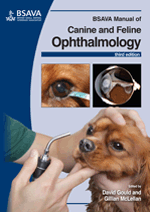
Full text loading...

The chapter looks at the lens, its anatomy and physiology; investigation of disease; canine and feline conditions.
The lens, Page 1 of 1
< Previous page | Next page > /docserver/preview/fulltext/10.22233/9781910443170/9781910443170.16-1.gif

Full text loading...



































